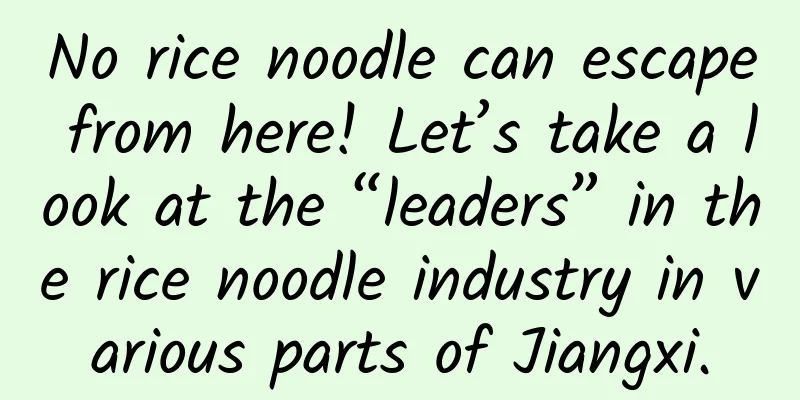The tragedy of Lenovo: Why did it fail miserably in the mobile phone market despite owning Motorola?

|
For Lenovo, a long-established company, there were two acquisitions that were of great significance, but fate played tricks on them. In 2004, Lenovo announced the acquisition of IBM's PC business. The industry generally questioned whether it was "a snake swallowing an elephant". However, after nearly a decade of digestion and integration, the statistical report for the second quarter of 2013 showed that Lenovo's global market share reached 16.7%, surpassing HP to become the world's largest PC manufacturer. In terms of global PC market share and total PC sales, this merger was undoubtedly an unexpected success, although it took a long time. Ten years later, in January 2014, Lenovo announced the acquisition of Motorola from Google. The public was shocked, but everyone was optimistic that Lenovo could successfully go global and surpass Samsung and Apple. This was closely related to the previous achievements of Lenovo's mobile business. By 2013, Lenovo had only taken four years to become the fourth largest mobile phone market share in the world and the second largest in China. Together with ZTE, Huawei, Coolpad and Lenovo, they established themselves in the domestic mobile phone market like four flags and were called China Cool Alliance. However, in just two years, the past ambitions have become a sigh. Lenovo, whose sales volume has fallen out of the top five in the Chinese market, has once again proved a truth with facts: it is too late to miss the opportunity. For these two acquisitions, we neither guessed the beginning nor the end. Recently, Lenovo announced that it plans to sell all the shares of Lianchuang Ruiye (Beijing) Asset Management for RMB 1.78 billion. Its main asset is the Beijing Lenovo Research Institute Building. In addition to selling the building, it has once again started a layoff strategy. It is reported that nearly 1,000 people will be laid off, and more than 70% of them are from Motorola's mobile phone department. In addition to the past few global layoffs, Lenovo's continued decline in smartphones has been further demonstrated. Even the Moto Z series, which Yang Yuanqing has high hopes of "changing the smartphone era", has still received mediocre response and is difficult to save the situation. Lenovo's strategic integration with Motorola's smartphones is still ongoing, but all signs indicate that Lenovo's hope of returning to its former glory in the short term seems to be increasingly slim. The difference between the two mergers and acquisitions: from picking peaches to taking over Looking at Lenovo's two acquisitions, the success of IBM PC is mainly due to two factors, while the failure of Motorola is also due to the lack of these two factors. The first is timing, and the second is value. These two factors made Lenovo play the role of the happy peach picker and the tragic receiver respectively. Before the advent of the Apple iPad and the smartphone era, the PC industry was the most promising and fastest-growing industry in the Internet. In the first decade of the 21st century, global PC shipments increased year by year, reaching 352.8 million units in 2011. Lenovo acquired IBM's PC business early in this period, gaining brand, technology and an international management framework, which enabled Lenovo's PC business to grow fourfold and become the world's third largest PC manufacturer. According to statistics, Lenovo's turnover was US$2.9 billion before the merger, and reached US$16.9 billion in the first half of 2007. Its share of the international market was 2.4% before the merger, and reached 16.7% in 2013 after the merger. It can be said that the PC wave has driven and boosted Lenovo's pace of going global. Total shipments of notebook computers by brand in Asia Pacific, 2004-2014
Shipments of notebook computers by brand in mainland China in 2003 Although Lenovo's mobile phone sales ranked first among domestic manufacturers in 2014, Lenovo's vision of seeing the big changes was obscured by the smokescreen of this advantage. Because the era of transitioning from contract phones to non-contract phones has arrived. In the second quarter of 2014, the three major operators began to comprehensively reduce marketing expenses and terminal subsidies, which means that in the future, mobile phone sales will mainly be based on bare phones. In the past, mobile phone manufacturers relied on operator subsidies to gain market share, and channels relied on contract phone rebates to make profits. This is outdated. At such a time of change, blindly acquiring Motorola is obviously not the right time. Because among many mobile phone manufacturers, Lenovo's mobile phones are undoubtedly the most dependent on operator channels. Lenovo's long-term dependence on operators has also begun to expose the hidden dangers it has buried before: it has always concentrated its product prices in the mid-to-low-end field, with too low profits, and lacks agile response measures to sudden changes in operator terminal policies, which caught it off guard. In such a situation, it is undoubtedly a fantasy to not consider optimizing its own brand, but to bring a former giant that is rapidly declining under its command and hope to break out of the predicament with this, because trying to prop up a falling building is more dangerous than slowly building a building with a preliminary framework. There is also a very clear difference in the value of IBM and Motorola to Lenovo. With the acquisition of IBM PC, Lenovo acquired the lifetime use rights of ThinkPad, the five-year use rights of IBM brand, PC development technology and international management framework. In terms of technology, in 2003, IBM applied for and was approved for 3,415 patents in the United States, ranking first in the world for 11 consecutive times. With the IBM PC-related Think Vantage technology set, Lenovo will have first-class PC management and maintenance technology. Once these acquisitions are successfully integrated strategically, they will bring Lenovo great advantages in its global expansion, and this is indeed the case. However, Motorola had been ruined by Google before the acquisition, and its value had shrunk significantly. At the beginning of the acquisition, Motorola had more than 10,000 employees worldwide, but in 2014, it had less than 3,000. Google also gradually "dismembered" Motorola Mobility, sold Motorola's set-top box business, global mobile phone manufacturing plants, etc., cut a large number of non-core businesses, and reduced 1/3 of its global market offices. What was sold to Lenovo was only the Motorola Mobility brand and some patent licenses. However, because Lenovo was only interested in the pass to enter the European and American markets at the time, it did not rationally analyze the practical value of Motorola and the adverse effects of its brand decline. Brand blur and multi-line operations miss the opportunity for transformation Before 2014, "China Cool Alliance" had obtained nearly 50% of the domestic smartphone market share. Lenovo, with its PC heritage, had a clear brand and channel advantage, and even once held the second place in the domestic market share, second only to Samsung. After that, Lenovo began its proud journey of launching a large number of mobile phones. In order to facilitate the layout of markets and channels at all levels and ensure shipments, it released at least hundreds of mobile phones every year. Facts have proved that the strategy of launching a large number of products has been very effective. By 2013, Lenovo had only taken four years to become the fourth largest mobile phone market in the world and the second largest in China. However, with the change of mobile phone channels, the strategy of launching a large number of products was defeated by the new model of focusing on one product. Lenovo was like a roller coaster, sliding down at a high speed while reaching the commanding heights. The strategy of flooding the market with products began to become Lenovo's weakness, further exacerbating the confusion of Lenovo's mobile phone brands. Lenovo's former brands already included Lephone, Lenovo, Lemon, Vibe, Zuk, Moto, etc., plus many mobile phone models under each brand. These brands that Lenovo failed to abandon in time were all low-end products, which affected Lenovo's focus and competition in the mid-to-high-end market. This is also the reason why Lenovo's mass products did not have a well-known brand with innovation or leading technology in the past two years. Without a hit product, Lenovo eventually faded out of people's sight. Yang Yuanqing said that Lenovo's transition from the operator market to the new market was slow, and the previous success in the operator market made Lenovo a bit complacent. Indeed, Lenovo was addicted to the glory created by multi-brand mobile phones and did not make decisive moves when entering a new era, which ultimately caused Lenovo to suffer. This is because Lenovo's pace was too slow compared to Huawei and Xiaomi. Too many brand names and confusing brand positioning not only made the mobile phone less recognizable, but also confused the user's vision and made it difficult to leave a positive and profound brand image. At the same time, the internal friction within the company was exacerbated by the infighting between the left and right hands of the multi-brand. Of course, Lenovo has also tried to improve its mobile business through marketing advantages, but this practice of putting the cart before the horse is still a mistaken mentality in the era of contract phones. In an era of free competition among consumer brands, product performance is the most explosive competitive advantage. Lenovo hastily concentrated its efforts on marketing without solving the problem of brand positioning, which is counterproductive. In the multi-brand state, the acquired Motorola failed to become a lifeline for Lenovo's mobile business, but instead became a chicken rib. The reason why Motorola was sold was that in the smartphone market, as a giant in the era of feature phones, it was very poor in terms of factory, technical team R&D capabilities, and product competitiveness, and it could not make a breakthrough in the smartphone market itself. Coupled with Google's exploitation, Motorola has become an empty shell. In addition to helping Lenovo open up the European and American markets, its greater role is to spread the decline to Lenovo itself, accelerating the collapse of Lenovo Mobile. PC is under attack, does Lenovo mobile phone still have a chance? In addition, Lenovo's lack of attention to technology research and development is also an important factor in the failure of its mobile phone business. This can be seen from the amount of investment in technology research and development. According to the financial reports for the 2006-2015 fiscal year, among Lenovo's annual R&D expenditures, only in the 2015 fiscal year did R&D revenue account for 2.6%, and the rest of the years were less than 1.9%. This ratio is already very low among technology companies, and Lenovo, as a technology giant, has such a low R&D investment, which is even more incredible. It can be said that Lenovo's mobile business has reached the edge of a cliff. Such a crisis has forced Lenovo to respond. For example, Lenovo has begun to abandon low-end products in the operator channel and adjust its target to the mainstream and mid-to-high-end price segments. This has formed the current three-product line strategy of Lenovo's mobile business. But Lenovo is too slow. Xiaomi and Meizu have already entered the thousand-yuan machine market; Huawei, OPPO, and Vivo have entered the mid-to-high-end market. In addition, there are new Internet brands such as 360 and LeTV, and the sales performance of several manufacturers has surpassed Lenovo. In March this year, Lenovo announced a major restructuring of its structure for the new year, involving almost all businesses, and reorganized the four major businesses of cloud services, enterprise services, PCs and mobile. This may be the point of Lenovo's rise after learning from its painful experience, and it is simple and then refined. In terms of mobile business, whether Lenovo, which has lagged behind for two years, can catch up and surpass others, and whether it can gradually realize the strategic transformation of the enterprise with the opportunity of smartphones, everything is still unknown. Moreover, Lenovo's main business, PC, has already been impacted, with the largest decline in the world. According to foreign media reports, market research companies IDC and Gartner recently released the third quarter shipment report of the global PC market. Both companies pointed out that HP, a veteran PC manufacturer, showed obvious signs of rising in the third quarter. Although it still lags behind Lenovo, the market share gap between the two parties is less than 1 percentage point. Lenovo's leading position in the PC market is in jeopardy. Whether it will focus on responding to HP's erosion of its PC business or fighting with the big powers in the mobile phone market without any advantage, we still don't know, but in any case, it will inevitably affect Lenovo's mobile strategy. Although Lenovo Mobile faces many difficulties, it is not without the opportunity to give it a try. Sales channels have always been Lenovo's advantage, especially in the development of overseas markets. Lenovo was earlier than other mobile phone manufacturers. Even when Lenovo's domestic smartphone sales were declining rapidly, Lenovo's mobile phone sales still ranked in the top three in emerging markets such as India, Russia, and Indonesia. This is enough to illustrate Lenovo's potential for overseas market expansion. With the help of PC sales channels, Lenovo can further integrate smartphone and PC sales, give full play to marketing advantages and improve the competitiveness of mobile phones. This successful model can be seen in the operation of OPPO. Obviously, imitating OPPO to plan offline markets is currently Lenovo's most feasible and fastest way to achieve results. However, regarding Lenovo's future strategy, Yang Yuanqing once said that cultivating overseas emerging markets and mature markets in Europe and the United States is a strategic necessity for Lenovo. Only under this premise will Lenovo consider turning the tide in the Chinese mobile phone market. In this way, it is difficult for Lenovo's mobile phones to make some major changes in the short term. But the fact is that the domestic mobile phone market has become one of the most important positions for global mobile phone manufacturers. Judging from the current market maturity, how to develop next has become a common puzzle for mobile phone manufacturers around the world. Perhaps Lenovo's mobile phone failure in China is the opposite of Huawei and Xiaomi, taking the path of "pacifying the country before conquering the outside world"? But no matter what, Lenovo really doesn't have much time left. As a winner of Toutiao's Qingyun Plan and Baijiahao's Bai+ Plan, the 2019 Baidu Digital Author of the Year, the Baijiahao's Most Popular Author in the Technology Field, the 2019 Sogou Technology and Culture Author, and the 2021 Baijiahao Quarterly Influential Creator, he has won many awards, including the 2013 Sohu Best Industry Media Person, the 2015 China New Media Entrepreneurship Competition Beijing Third Place, the 2015 Guangmang Experience Award, the 2015 China New Media Entrepreneurship Competition Finals Third Place, and the 2018 Baidu Dynamic Annual Powerful Celebrity. |
<<: Still not fast enough? Tesla's new firmware will further improve acceleration time
>>: CPU controlling the overall intelligence will be another way out for driverless cars
Recommend
Google plans to launch new Plaso mobile payment service to challenge Apple
[[127870]] On February 12, according to foreign m...
APP promotion planning: 60,000 paying users increased within 7 days of beta testing!
How can a new product gain a large number of foll...
Event Operation | How to organize an event with a high degree of completion?
How can an operator carry out an activity more sc...
Why is the bottom of a beverage bottle designed to look like a flower? Is it for beauty or to hold less?
Expert of this article: Li Yilan, PhD in Chemistr...
Juefei Technology's strength is listed in the "2020 China New Infrastructure Industry Innovation List"
On August 18, the "2020 China New Infrastruc...
Which is safer, a mobile phone digital password or a nine-square grid?
After years of development, mobile phone unlockin...
I really don’t recommend you to use the internet-famous “Copenhagen Weight Loss Method”!
For those who want to lose weight, as long as the...
Fan Gongzi's "White, Rich and Beautiful Girlfriend Plan" is the unprecedented and only strategy to attract white, rich and beautiful women
Course Catalog of Fan Gongzi's "White, R...
Fun fact: Why don’t herbivores eat meat?
I recently saw an interesting question. A netizen...
How much does it cost to make a candied fruit app in Zhenjiang?
WeChat Mini Program is an application that users ...
Brain death may not be true death? The blurring boundary of death
Author: Global Science Mechanisms for coping with...
Horrible! After a woman removed 30 moles at a roadside stall, her eyeballs were burned and she almost went blind! Doctors urgently warn →
Recently, a news report about 57-year-old Aunt Wa...
5 ways to promote your search results on Baidu
We all know that the effectiveness of Baidu searc...
How to create the Shaoguan food ordering mini program? How much does it cost to develop a food ordering app?
The catering industry has become the first choice...
Watermelon or grapes? No, it's gooseberries!
"He couldn't imagine a manor, a place of...









